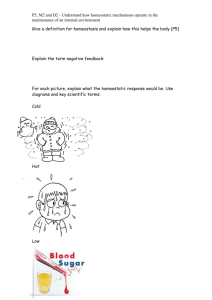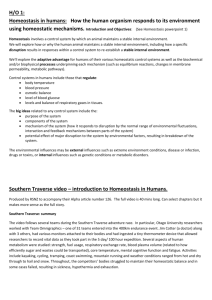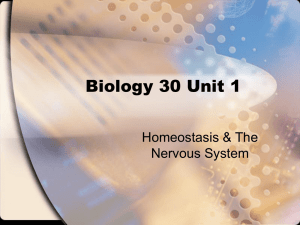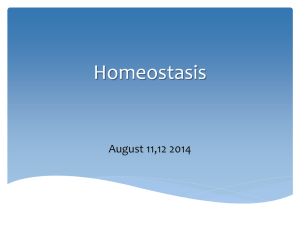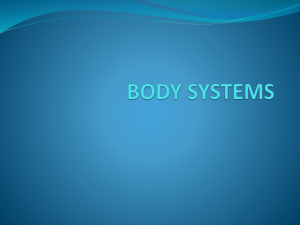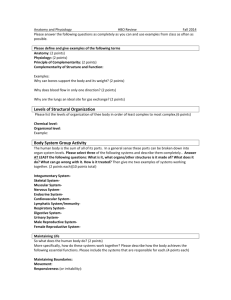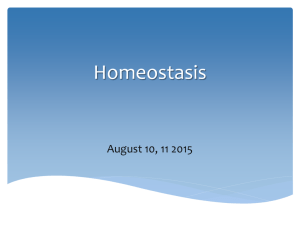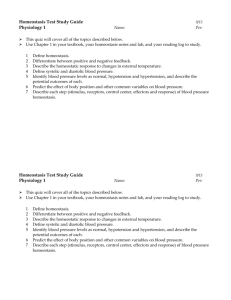Objective #5 Explain the concept of homeostasis and its significance
advertisement
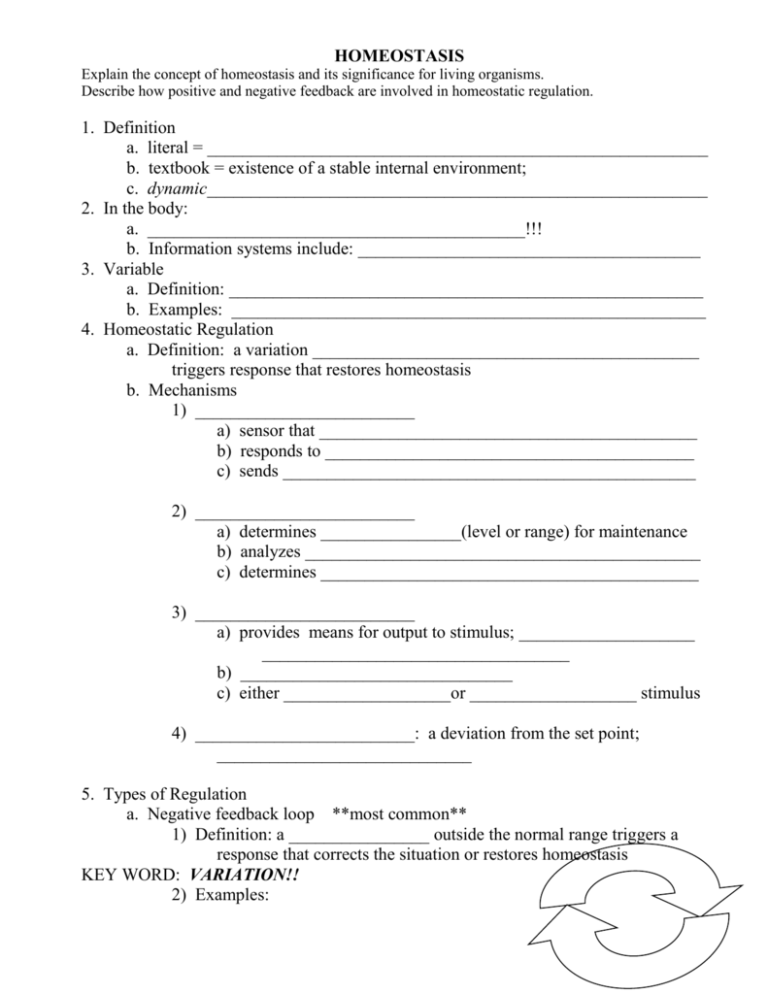
HOMEOSTASIS Explain the concept of homeostasis and its significance for living organisms. Describe how positive and negative feedback are involved in homeostatic regulation. 1. Definition a. literal = _________________________________________________________ b. textbook = existence of a stable internal environment; c. dynamic_________________________________________________________ 2. In the body: a. ___________________________________________!!! b. Information systems include: _______________________________________ 3. Variable a. Definition: ______________________________________________________ b. Examples: ______________________________________________________ 4. Homeostatic Regulation a. Definition: a variation ____________________________________________ triggers response that restores homeostasis b. Mechanisms 1) _________________________ a) sensor that ___________________________________________ b) responds to __________________________________________ c) sends _______________________________________________ 2) _________________________ a) determines ________________(level or range) for maintenance b) analyzes _____________________________________________ c) determines ___________________________________________ 3) _________________________ a) provides means for output to stimulus; ____________________ ___________________________________ b) _______________________________ c) either ___________________or ___________________ stimulus 4) _________________________: a deviation from the set point; _____________________________ 5. Types of Regulation a. Negative feedback loop **most common** 1) Definition: a ________________ outside the normal range triggers a response that corrects the situation or restores homeostasis KEY WORD: VARIATION!! 2) Examples: b. Positive feedback loop 1) Definition: initial stimulus produces a response that exaggerates or enhances its effects 2) feedback causes the level of a variable to change in the ______________ ____________________as the initial change 3) PURPOSE: escalating for processes which must be completed quickly! 4) Examples: 6. Homeostatic Imbalance a. results from a ________________________________________________ ________________________________________________________ b. negative mechanisms may be overwhelmed c. positive mechanisms may take over 7. Homeostatic Failure a. from ______________________________________________________ b. organ systems malfunction c. individual shows ____________________________________________ 8. Basic related vocabulary: a. _________________: an abnormality of structure and / or function b. _________________: illness characterized recognizable set of symptoms & signs c. _________________: changes in body functions __________________ not apparent to an observer like ____________________________________________ d. _________________: _________________ changes, observable and measurable like ____________________________________________________________ ________________________________________________________________ e. _____________________: identification of a disease or disorder based on a scientific evaluation of patient’s symptoms and signs, including 1) 2) 3) ______________________: collecting info about events that might be related, chief complaint, history of present illness, past medical problems, family problems, social history ______________________: orderly evaluation of body and functions a) inspection b) palpation c) auscultation d) percussion ____________________________ including blood and urine f. ____________________ 1) normal process characterized by ________________________________ in body’s ability to restore homeostasis 2) produces observable changes in structure and function and increased vulnerability to stress and disease 3) changes apparent in all body systems: wrinkles, gray hair, _____________ bone and muscle mass; _________________ strength, reflexes, and hormone production; __________________ heart disease and susceptibility and decreased lung capacity



